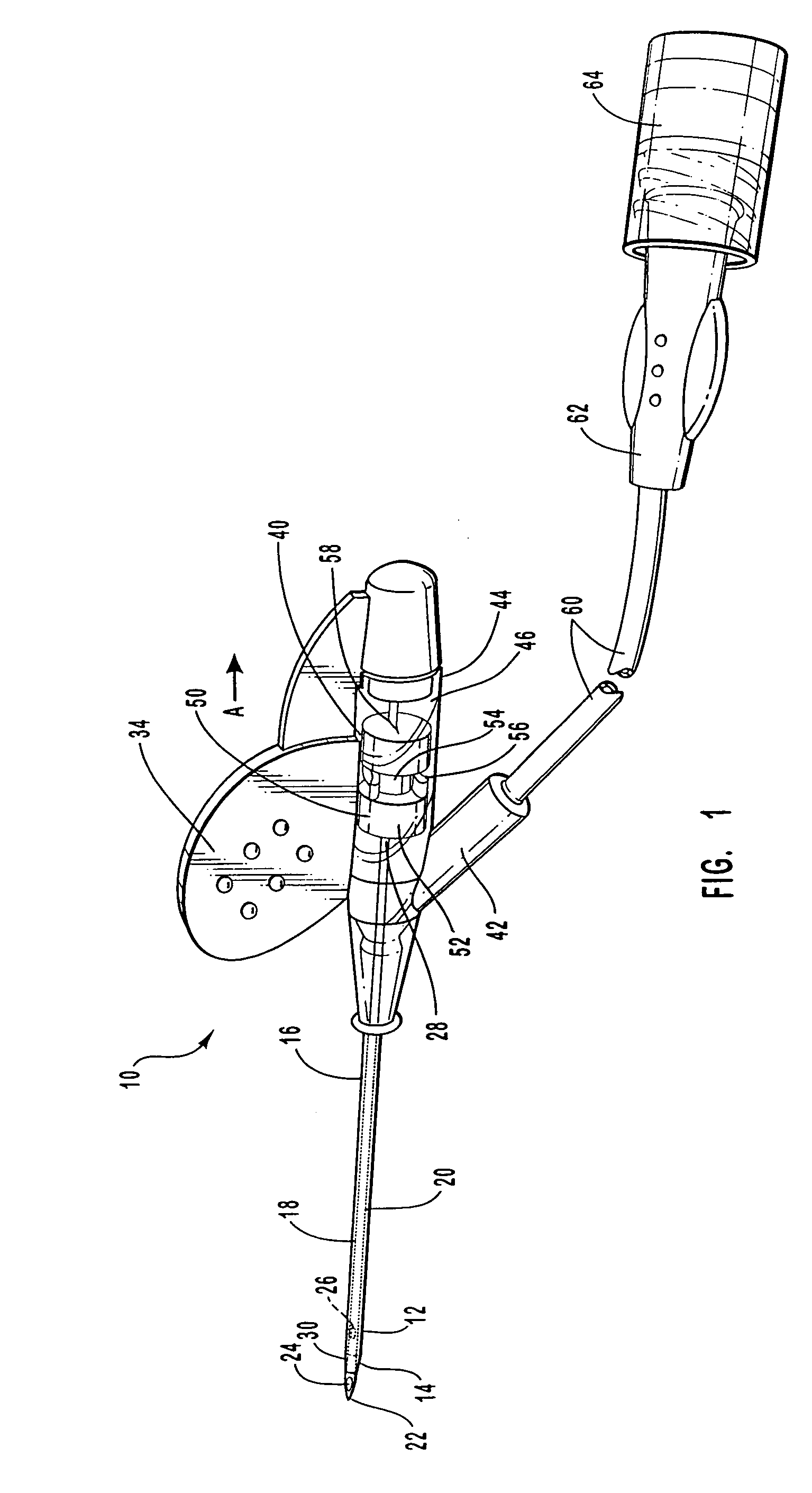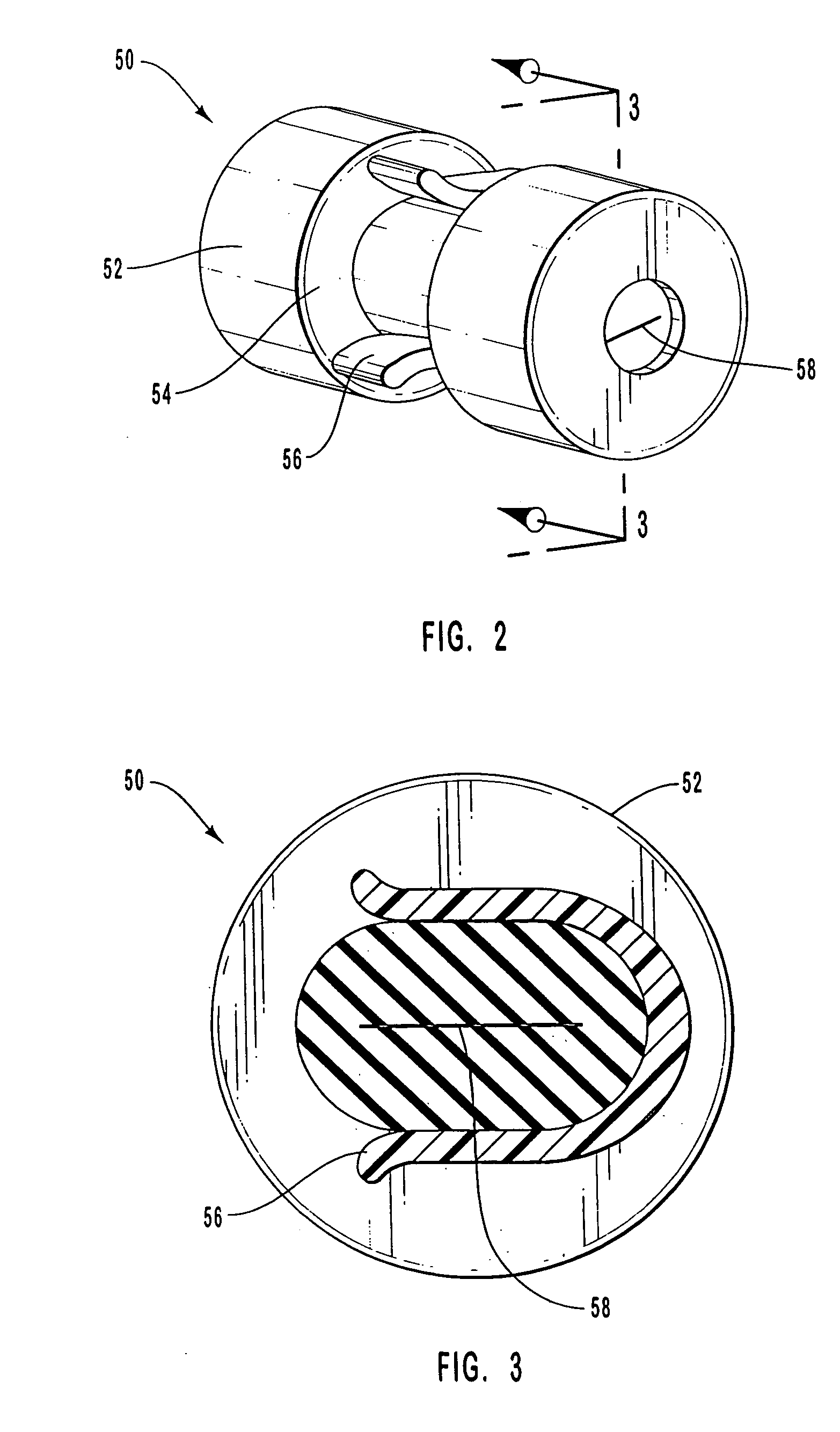Vascular access device
a vascular access device and septum technology, applied in the direction of operating means/releasing devices of valves, diaphragm valves, engine diaphragms, etc., can solve the problems of unnecessary alarm of patients and other observers, blood leakage can expose medical personnel and others to blood-borne diseases, and blood leakage can contaminate equipment and supplies in the treatment area. , to achieve the effect of preventing the leakage of blood
- Summary
- Abstract
- Description
- Claims
- Application Information
AI Technical Summary
Benefits of technology
Problems solved by technology
Method used
Image
Examples
Embodiment Construction
[0027]The present invention can be best understood by reference to the drawings where like parts are designated with like numerals throughout. One embodiment of a vascular access device incorporating the blood seal having a spring-biased septum of the present invention is generally designated 10 in FIG. 1. As mentioned above, the vascular access device 10 allows for the placement of a catheter in a patient and subsequent removal of the introducer needle while maintaining a blood seal at the proximal end of the catheter. This allows a medical professional to introduce a catheter into a patient's blood vessel and remove the introducer needle without the need to be concerned about blood leakage.
[0028]As illustrated in FIG. 1, the vascular access device 10 includes a catheter 12. The catheter 12 has a distal end 14, a proximal end 16, and an internal lumen 18. A needle 20 having a sharpened end 22 is slidably mounted within the internal lumen 18 of the catheter 12, such that the sharpen...
PUM
 Login to View More
Login to View More Abstract
Description
Claims
Application Information
 Login to View More
Login to View More - R&D
- Intellectual Property
- Life Sciences
- Materials
- Tech Scout
- Unparalleled Data Quality
- Higher Quality Content
- 60% Fewer Hallucinations
Browse by: Latest US Patents, China's latest patents, Technical Efficacy Thesaurus, Application Domain, Technology Topic, Popular Technical Reports.
© 2025 PatSnap. All rights reserved.Legal|Privacy policy|Modern Slavery Act Transparency Statement|Sitemap|About US| Contact US: help@patsnap.com



